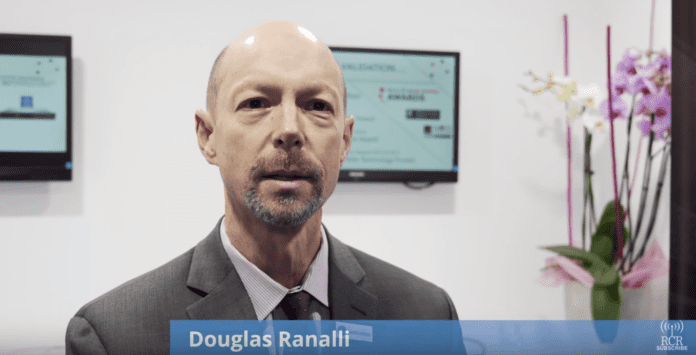Signaling-control delivered via software sets the stage for the explosion in IoT devices, as well as 5G, while accelerating innovation
Virtualizing telecommunications networks is a costly and expensive task. But, given the increasing complexity of existing networks, coupled with the continued and dramatic growth of the internet of things and the promise of 5G deployments in the next few years, virtualization is also an imperative. Turning over management processes to virtual machines and automation will be the only way to deliver services in a way that ensures long-term business success.
To get a better understanding of how these forces are reshaping the telecom industry, RCR Wireless News spoke with Douglas Ranalli, founder and chief strategy officer of NetNumber, during Mobile World Congress 2017 in Barcelona, Spain.
He explained the foundational shift that will occur as software-based signaling-control becomes more prevalent. “If we’re no longer deploying hardware platforms that have to be specifically backed up and protected, you can think of the network as many small software instances that are allowed to fail because recovery is very quick and simple. So it changes the pace of innovation and it changes the definition of how we introduce resilience into the network.”
From a product perspective, NetNumber specializes in software-based signaling-control, which, from a macro level, takes complexity out of the core network, while reducing operating costs and enabling more agile service delivery. The company’s TITAN Centralized Signaling and Routing Control (CSRC) is a virtualized infrastructure that handles all signaling control services, ENUM/DNS, SIP, Diameter, SS7/C7, Radius and SIGTRAN, on a common platform.
“Our role in the ecosystem is to help service providers drive cost out of their signaling-control network and figure out how to accelerate innovation in their networks and services,” Ranalli said. “Mobile operators struggle with constantly increasing complexity because we’re continually introducing new forms of technology. This constant innovation of networking technologies translates into constantly growing complexity in the core of the network.”
During Mobile World Congress, NetNumber announced a partnership with Parallel Wireless, which has developed an easy-to-use virtualized radio access network solution. The combination of Parallel’s vRAN with NetNumber’s TITAN supports all voice options including CSFB, VoLTE, VoWi-Fi, Push-to-Talk and Over the Top voice services.
Parallel Wireless Founder and CTO Rajesh Mishra said, “This strategic collaboration with NetNumber on virtual IMS architecture delivers [total cost of ownership] savings and operational simplification while scaling to meet the needs presented by 4G, 5G and IoT.”
Ranalli said IoT presents “an opportunity for operators to rethink, at a very fundamental level, how do they build technology, how do they deploy technology. We’re talking about an explosion of devices with totally different characteristics, totally different ways they use the network and totally different price points. As we introduce this, this is the chance for operators to say, ‘How do I do it totally differently? How do I take advantage of the scale of the cloud?’ This, I think is both the challenge and the opportunity presented by IoT today.”
The perpetuation of IoT devices and network endpoints is another example of the need to virtualize network infrastructure so signaling traffic doesn’t outpace the network’s ability to handle it.
“Initially,” Ranalli said, “virtualization actually increases costs for operators, because they’ve got a complete infrastructure today. So, if we rebuild the infrastructure as a virtualized network, costs go up initially. The goal, though, of virtualization is to move to a software network where we can totally change the definition of success in terms of upgrading software. We can make changes on demand, so innovation accelerates and it changes the way we think about network resilience.” Operators should experience greater benefits from a more flexible and resilient network that provides a level of service agility not supported by more traditional, hardware-based network design.
Click here to learn more about NetNumber.

